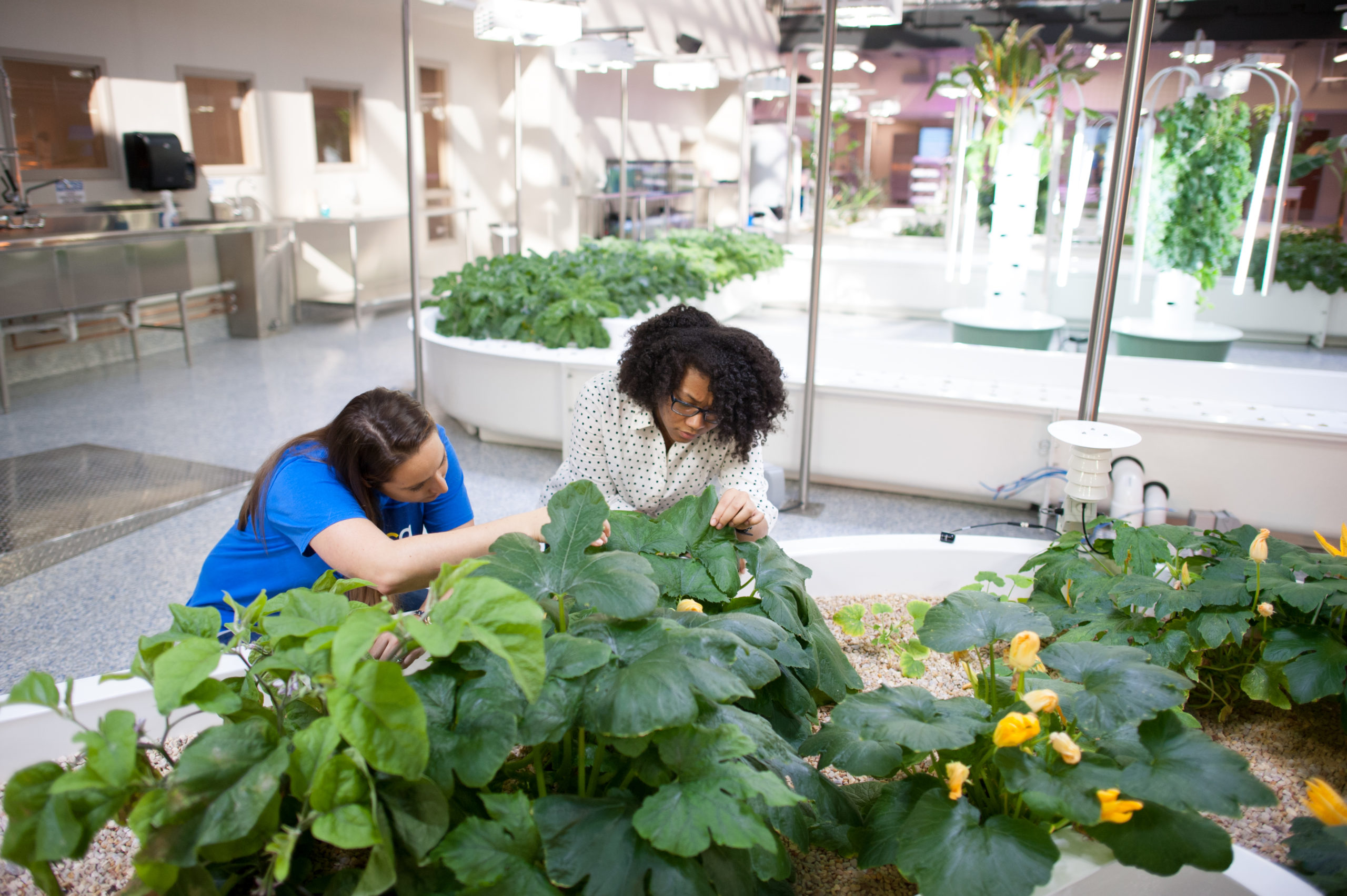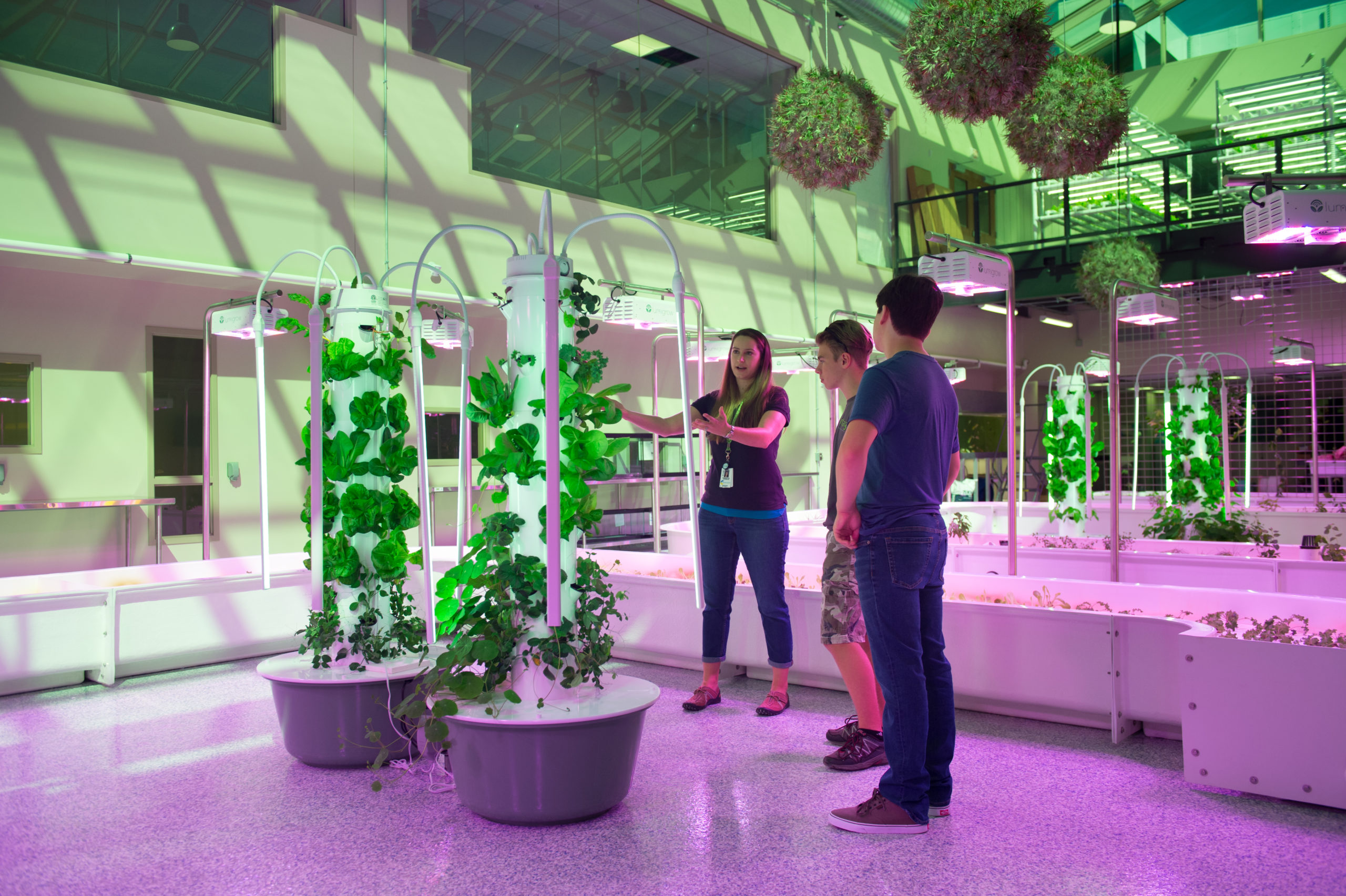
A cyber school in Pennsylvania operates what may be the largest publicly accessible aquaponics facility in the U.S. The AgWorks learning lab, which has strengthened distance learning at the public charter, precedes the TechWorks and MedWorks construction projects.
Challenge: Leaders at the Commonwealth Charter Academy in Harrisburg planned to expand office space at the school’s headquarters by repurposing a vacated credit union building. The project morphed into the aquaponics lab when designers realized the offices would only take up a portion of the 6,100-square-foot structure.
Cyber school officials then had to make AgWorks accessible to distance learners.
“We researched products that had online dashboards and camera systems that could collect videos and images of experiments in real time so our students could review their work,” says CEO Maurice Flurie.

Solution: The lab’s data sensors allow online learners to use aquaponic, aeroponic and hydroponic technology to raise plants and fish. Students can see their experiments through remote control lighting and camera systems. Meanwhile, the academy ships course materials to distance learners.
Approximately 500 students—with help from two adult supervisors—run the facility, which also features a CRISPR lab where visitors can splice genes to change the color of zebra fish. “People usually don’t have access to the labs we have until they start doing doctoral work,” says Flurie. “These kids will have a leg up on all of their peers.”
Completion date: December 2018

Cost: $1.5 million
Project team: Construction: Lobar Inc. (Dillsburg, Pa.); aquaponics maintenance consultant: Ladder & Vine (New Cumberland, Pa.); urban farming consultant: Phipps Conservatory and Botanical Gardens (Pittsburgh); lighting: Cima Network (Chalfont, Pa.); water chemistry consultant: York Water Company (York, Pa.); fish tank cleaning and maintenance: Fish Geeks (Mechanicsburg, Pa.); equipment consultant: Intag Systems (Harrisburg, Pa.); sustainability consultant: Solar Renewable Energy (Mechanicsburg, Pa.)







